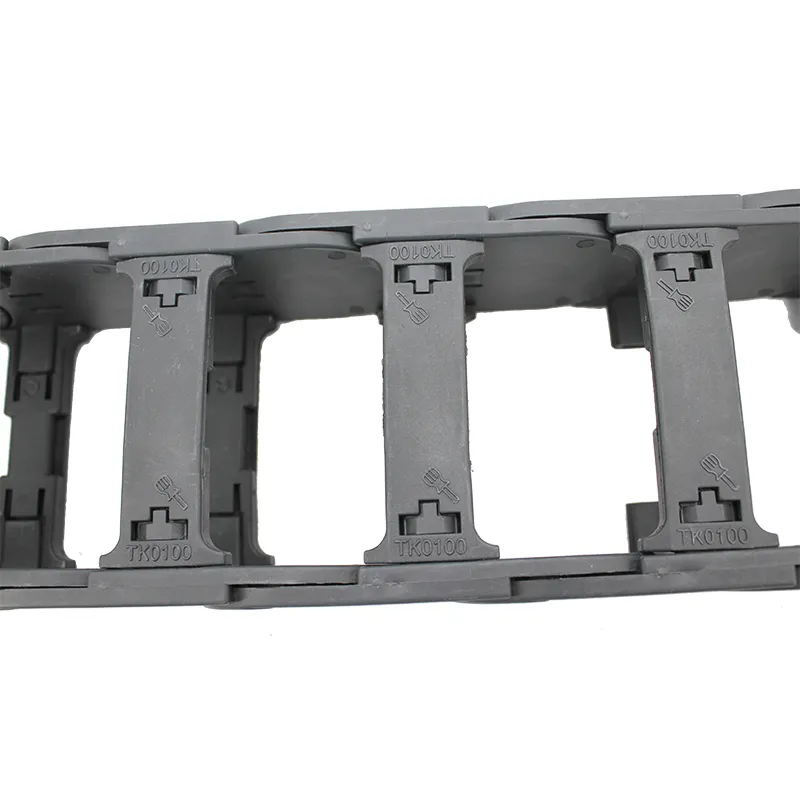Versatile Cable Management Solutions for Efficient and Organized Spaces
Exploring Flexible Cable Tracks The Future of Efficient Cable Management
In today's fast-paced industrial environment, efficient cable management is crucial for optimizing productivity, ensuring safety, and maintaining operational efficiency. One innovative solution that has gained traction in various applications is the flexible cable track. This system is designed to securely guide and protect cables, hoses, and other lines in dynamic environments, making it an essential component in modern engineering and manufacturing.
What is a Flexible Cable Track?
A flexible cable track, often referred to as a drag chain or cable carrier, is a system that organizes and protects moving cables and hoses in machinery and equipment. These tracks are composed of interconnected links or segments that create a channel for the cables to move through as machinery operates. The flexibility of these tracks allows for significant movement in multiple directions, accommodating complex machinery that requires cables to navigate twists and turns.
Advantages of Flexible Cable Tracks
1. Protection of Cables One of the primary advantages of utilizing flexible cable tracks is the protection they offer to cables and hoses. In industrial settings, cables are often exposed to physical damage, wear, and environmental factors. The cable track mitigates these risks by securely housing and guiding the cables, thereby extending their lifespan and reducing the need for frequent replacements.
2. Organized Layout Flexible cable tracks contribute to a more organized workspace by tidily routing cables. This organization minimizes clutter and the risk of tripping hazards, improving both safety and aesthetics in work environments. An orderly cable management system also aids in maintenance by simplifying the identification and access to individual cables.
flexible cable track

3. Enhanced Mobility The design of flexible cable tracks accommodates a wide range of motion, making them ideal for applications where machinery moves in multiple axes. Industries such as robotics, CNC machining, and automotive production benefit greatly from this feature, as it allows for unhindered movement without the risk of cable tangling or breaking.
4. Customization Flexible cable tracks can be tailored to meet specific requirements based on the operational needs of different sectors. They come in various sizes, materials, and designs, allowing industries to select the best fit for their machinery and work environment. Customization ensures that the cable management system is both efficient and effective.
5. Easy Installation and Maintenance Many flexible cable tracks are designed for ease of installation, incorporating user-friendly features that allow for quick setup and adjustments. Furthermore, they facilitate easy access for maintenance purposes, minimizing downtime and enhancing overall productivity.
Applications of Flexible Cable Tracks
Flexible cable tracks find applications across a myriad of industry sectors. In the robotics field, they are invaluable for managing power and control cables in robotic arms and assembly lines. In manufacturing plants, they manage hoses and cables in CNC machines and conveyors, reducing wear and preventing accidents. Additionally, the entertainment industry benefits from using flexible cable tracks in theater rigging and mobile staging setups, ensuring that cables are safely managed while allowing for creative staging solutions.
Conclusion
As industries continue to evolve and incorporate advanced technologies, the importance of effective cable management cannot be overstated. Flexible cable tracks offer a robust solution that addresses the needs of modern machinery while promoting safety and efficiency. With their protective, organizational, and mobility-enhancing features, these systems are set to play a pivotal role in the future of industrial operations. Embracing flexible cable tracks is not merely a choice for efficiency; it is a proactive step towards fostering innovation in an increasingly complex industrial landscape. By investing in this technology, businesses can not only improve their current operations but also position themselves for future growth and advancement.








